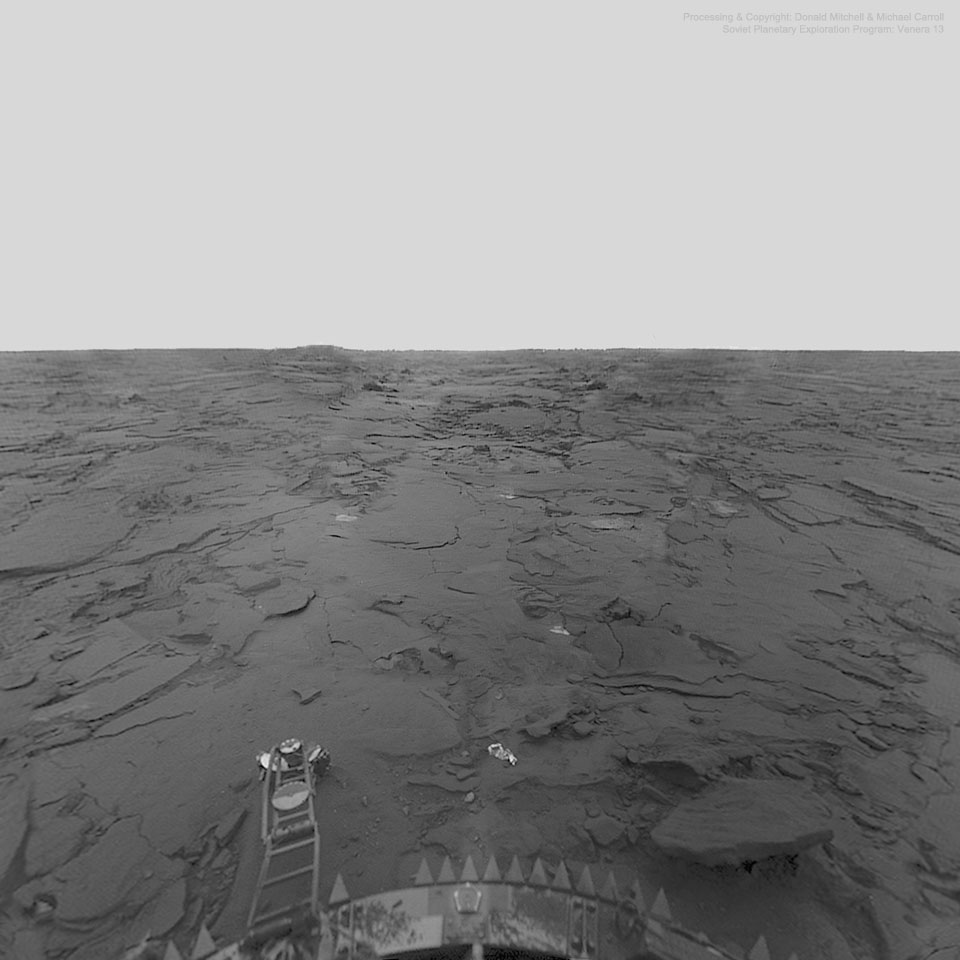金星14号拍摄的金星表面
(原标题: The Surface of Venus from Venera 14)
2025-05-11
浏览次数: 451
如果你能站在金星上——你会看到什么?图为1982年3月从金星14号(Venera 14)上看到的景象,这是一架苏联机器人着陆器,它通过降落伞和空气制动在厚厚的金星大气层中降落。它看到的荒凉景观包括平坦的岩石,广阔的空旷地带,以及靠近金星赤道的菲比地区上空毫无特色的天空。左下方是航天器的穿透计,用于进行科学测量,而右侧的浅色部分是弹射透镜盖的一部分。在接近450摄氏度的温度和75倍于地球的压力下,硬化的金星飞船只持续了大约一个小时。尽管来自金星14号的数据在40多年前就被传送到太阳系内部,但对金星14号不同寻常的图像的数字处理和合并直到今天仍在继续。欧空局的金星快车号航天器最近对红外测量数据的分析表明,金星上目前可能存在活火山。拼图乐趣:天文拼图的一天
查看原文解释
If you could stand on Venus -- what would you see? Pictured is the view from Venera 14, a robotic Soviet lander which parachuted and air-braked down through the thick Venusian atmosphere in March of 1982. The desolate landscape it saw included flat rocks, vast empty terrain, and a featureless sky above Phoebe Regio near Venus' equator. On the lower left is the spacecraft's penetrometer used to make scientific measurements, while the light piece on the right is part of an ejected lens-cap. Enduring temperatures near 450 degrees Celsius and pressures 75 times that on Earth, the hardened Venera spacecraft lasted only about an hour. Although data from Venera 14 was beamed across the inner Solar System over 40 years ago, digital processing and merging of Venera's unusual images continues even today. Recent analyses of infrared measurements taken by ESA's orbiting Venus Express spacecraft indicate that active volcanoes may currently exist on Venus. Jigsaw Fun: Astronomy Puzzle of the Day
© Donald Mitchell
